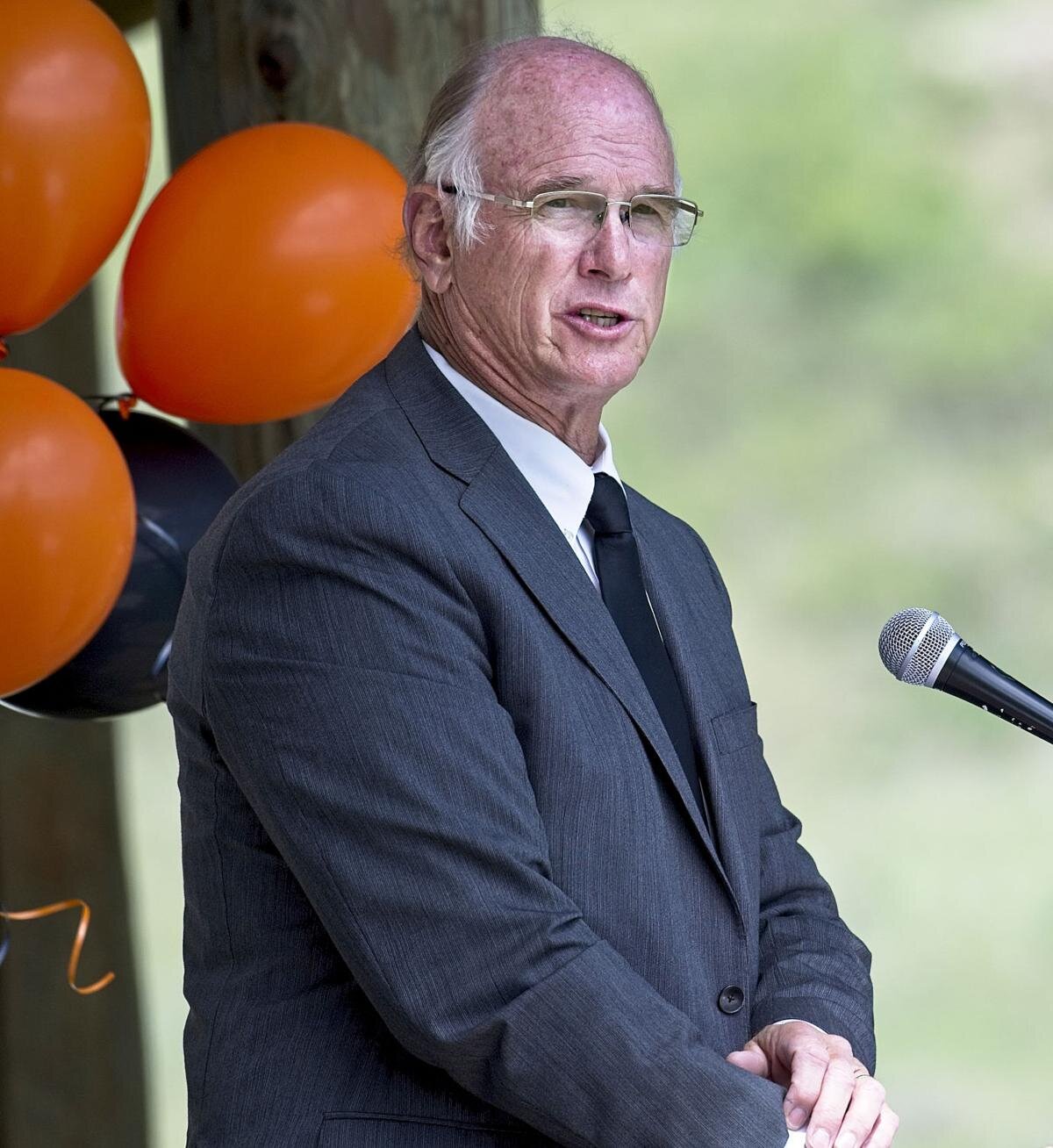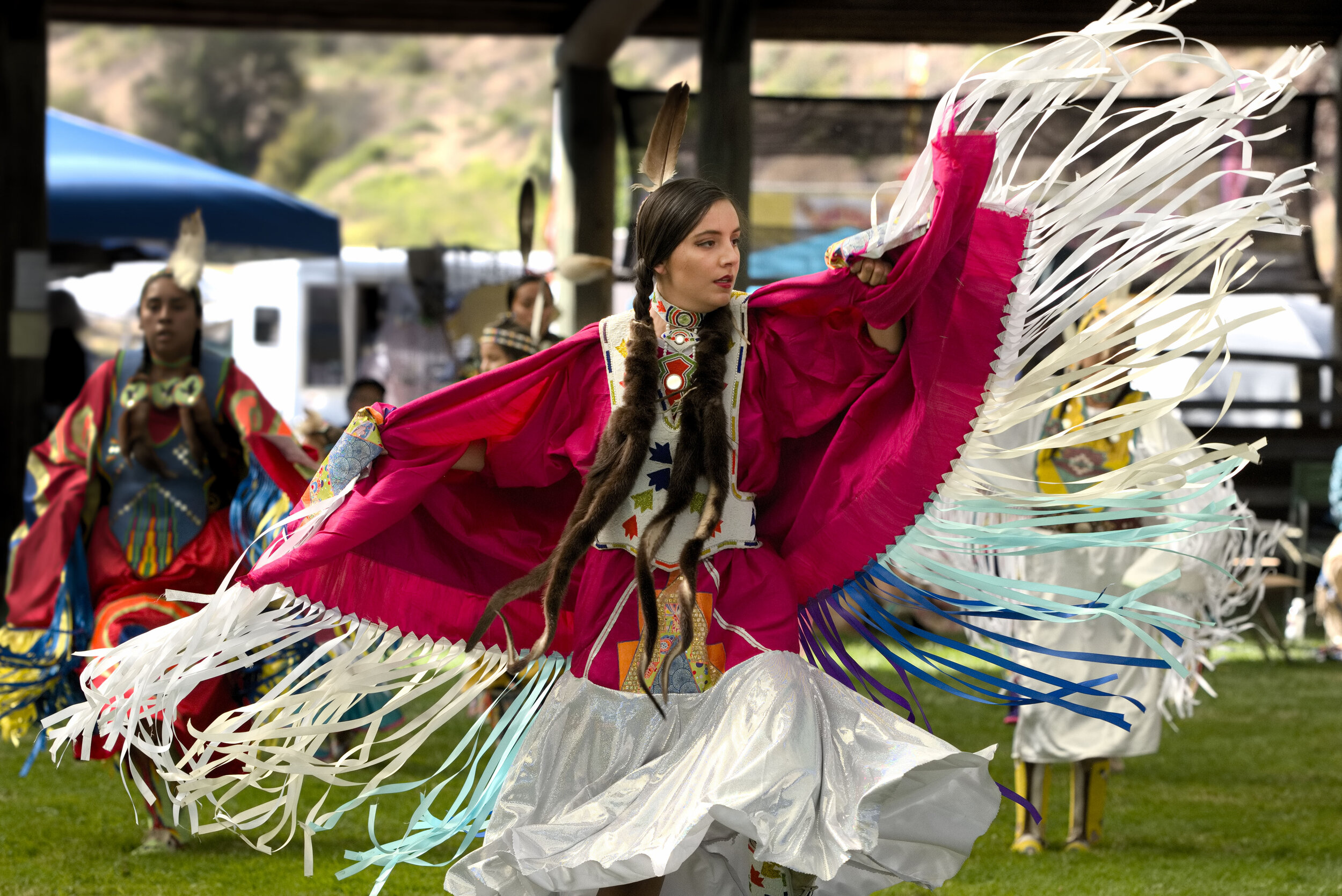By Ellen Morris Bishop of the Wallowa County Chieftain, May 27, 2020
On a near-perfect morning, Wallowa High School launched 10 promising new graduates into the future at the Tamkaliks Pow-Wow grounds. The ceremony, which met Phase 1 COVID-19 guidelines, broke with many traditions. But it may have started some new ones.
Except for the final awarding of diplomas, students and their immediate families were confined to their vehicles, parked in designated spaces around the outside of the Tamkaliks arbor. The inevitable graduation speeches boomed through a loudspeaker. There was no clapping at the end of speeches, or for individual students as they received their diplomas. Instead, there was celebratory horn-honking. KWVR broadcast the entire ceremony, play-by-play, over the radio, and it was also simulcast on a Facebook feed. It was available in every virtual respect. And it was also very real.
Principal David Howe gave a short but moving introduction. He lauded the class of 2020’s achievements. “Some people said this class wasn’t as academic as the class ahead of them or the class behind,” he said. “But they outperformed the class above them, and the class below them, on the PSAT tests in both their sophomore and junior years, and outperformed the class above them in the Oregon State Assessment tests.”
“You all have heart, and your heart shines through more often than you might think, Howe said. “Class of 2020, I believe that if you follow your mind and your heart, there isn’t anything this class can’t do,” Howe concluded.
Salutatorian Quinten Tillery summarized some of his classmates’ most memorable adventures and misadventures. “We stuck with it through the hard times, and got our diplomas, and I couldn’t be prouder to be part of the class of 2020,” he said.
Valedictorian Ashlyn Young reminded the class of 2020 that each moment is different, and we’ll never get the same moment twice. “I think many of us get lost trying to create the perfect moment,” she said. “We put the trophy at the finish line, and overlook the small wins along the way. We promise not to take this life and the moments in between for granted.”
In her tribute to seniors, Wallowa teacher Jori Journigan noted that the class of 2020 accumulated more than $113,000 in scholarships and awards, mostly from local sources including the Lawton and Florence McDaniel award, the Wallowa Volunteer Fire Department, the Terry Crenshaw Memorial, the Wallowa Education Association Memorial, and the Wallowa Lions Club.
Natalie Miller, valedictorian of the class of 2010, gave the commencement address. Miller studied to become a CPA, and after working for a prestigious firm in Seattle came home to Wallowa County where she is now the chief financial officer for Terminal Gravity. She reminded students that there is much more to life than following a set plan to achieve financial and professional success. “When I finally achieved all the goals I’d focused on, and checked all the boxes on my life “to do” list, I had lost sight of what I liked to do for myself without an agenda or a plan. So I started going to concerts, getting outside, spending time with friends. Those things filled me up in a way that work was never going to. Work and goals are not the only things that give your life value.”
To receive their diplomas, students exited their family’s vehicle and stood at designated spots (with appropriate social distancing) around the interior of the circular dance arbor, then walked to the stage, picked up their diploma, paused, and ultimately returned to their original spot when the diplomas had all been awarded. A ceremony without handshakes or hugs seemed barren of the usual emotion, but there were plenty of smiles as well as the traditional change of tassels, and joyful cap-tossing.
Principal Howe said he thought the ceremony as a whole went off as planned, and that the school might consider holding future (and more traditional) graduations at the Tamkaliks grounds.
“If we had weather like this, it would be perfect,” he said. He also expressed gratitude for the glass Cougar paws made by Stirling Webb at Moonshine Glass, and the sponsors (Enterprise Animal Hospital, Main Street Motors, Wallowa Valley Center for Wellness, Winding Waters Clinic, and Wallowa County Grain Growers) to help graduates and faculty long remember this very unusual ceremony and very different year.























